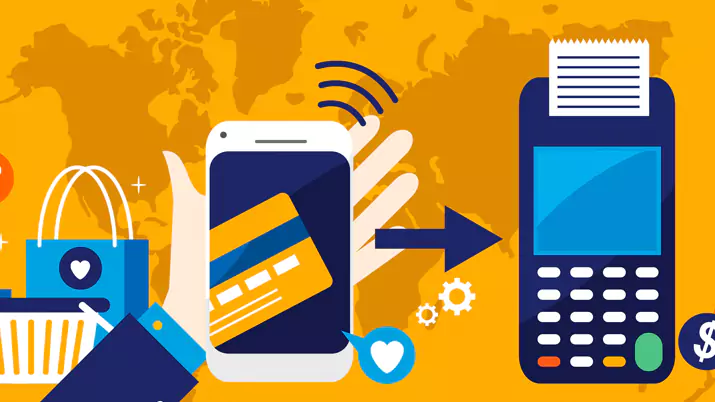Currency has been evolving for thousands of years. People began exchanging goods and services using the barter system but eventually switched to coins as a matter of practicality. Today, we primarily use cash and credit cards, but mobile payments are emerging as a convenient new way to pay for goods and services. The mobile payment industry is growing, but it faces challenges to gaining widespread adoption.
Mobile Pay Timeline
- 1997 – Coca-Cola introduces SMS purchasing in select vending machines. Exxon Mobile begins accepting payments via Speedpass, which uses RFID technology so customers can swipe and pay instantly at the pump.
- 1998 – PayPal is founded.
- 1999 – Movie tickets become available for purchase using some mobile phones.
- 2001 – Mobile commerce reaches $2.4 billion worldwide. Domino’s Pizza starts taking orders via cell phone.
- 2003 – 95 million users worldwide make purchases with their phones.
- 2004 – SMS is used to make donations to nonprofits.
- 2005 – Nokia launches the first NFC-enabled phone.
- 2009 – The mobile payment market reaches $69 billion in sales. Square begins service.
- 2010 – An eBay user purchases a $240K Mercedes-Benz via smartphone.
- 2014 – Apple introduces Apple Pay.
- 2015 – Android Pay and Samsung Pay become available.
Mobile Pay Today
Mobile device use has become the norm. Today, 68 percent of American adults have smartphones and 45 percent own tablets. Smartphone users do nearly everything with their devices, including watching TV, monitoring social media, and making purchases. Approximately 90 percent of cellphone owners carry their phones with them most of the time. Collectively, Americans check their cell phones 8 billion times a day. Mobile payments are a logical progression as people become more reliant on their portable devices to accomplish everyday tasks. As a result, mobile payment options are increasing.
In 2015, a regulation took effect that shifted credit card fraud liability from banks to retailers, requiring them to install point-of-sale (POS) terminals with EMV-compliant microchip readers. Most new card terminals are also NFC capable, giving retailers the opportunity to offer in-store mobile payment options.
Currently, there are three types of mobile payments: m-commerce, m-payments, and m-wallets. Most smartphone users have made m-commerce payments. These are made using a mobile browser to purchase items from an online retailer that stores your payment information in the cloud. For instance, when you make a purchase from a website such as Amazon.com, they have your payment information stored.
M-payments and m-wallets keep your information secure. Merchants don’t get your credit card information. Instead, tokenization technology is used to create a unique code for each transaction to safeguard your data. The bank or credit card information on your phone is replaced with an encrypted key that creates dynamic codes; the merchant doesn’t see your sensitive data, but instead receives a token that only the payment network can unlock. When making a purchase, you use a PIN or thumbprint to verify your identity.
M-wallets such as Apple Pay, Android Pay, and Samsung Pay use Near Field Communication (NFC) technology. Your device interacts with a nearby POS system to make a sales transaction. Samsung Pay also uses Magnetic Secure Transmission (MST), which emulates swiping a physical payment card. Since most sellers already have credit card swiping terminals, you can use Samsung Pay in more locations versus other mobile wallet apps.
The Future of Mobile Pay
Mobile pay adoption has been slow. Until this year, a limited number of retailers possessed the equipment necessary for customers to pay in-store with their mobile devices. Now that many companies have switched to chip readers, that’s no longer an issue. However, for mobile pay to reach a tipping point, it needs a better value proposition. Businesses can offer loyalty programs, rewards and coupons as incentives to encourage their customers to pay with their phones.


